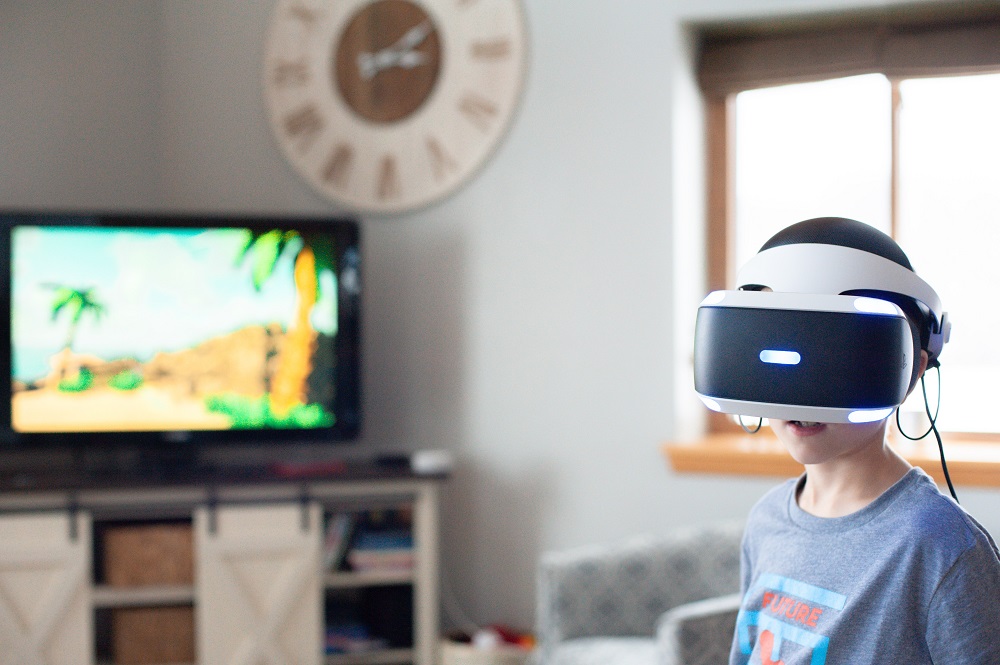As a health professional and a parent, I thought the beginning of the school year was a good time to go over some healthy media habits that will protect children’s vision, hearing and musculoskeletal development. Screens are here to stay so we need to interact with them in the most comfortable and beneficial way, the “new normal in the digital age.” Make it a positive change and lead by example.
If you want to look up screen-time guidelines go to this link on Media and Children from the AAP (American Academy of Paediatrics). An increase in screen time results in sacrificing another activity be it sleep, family time or physical activity.
More and more, as physios, we are seeing kids for back and neck pain. Audiologist and optometrist friends also anecdotally report they are treating more kids with noise-induced hearing loss and short-sightedness. We have kids who are so chronically tired that they are not performing to their academic or sporting or social potential and, developing musculoskeletal problems from inappropriate screen use.
It’s concerning so, I thought I’d share some tips from a great book I am currently reading.
Tips for better sleep:
- Replace the phone alarm with an alarm clock so phones aren’t in bedrooms waking them up with notifications/updates etc.
- Don’t use the bed for using devices/doing homework etc as the body/mind associates bed as a place of work or active brain instead of sleep
- Get into a good getting ready for sleep routine- screens go to sleep (ideally 90 minutes before humans but even 30 mins will help), wind down with a bath, reading a book, chilled music whatever works and do these things in the same order at the same time each night so the body learns the signs of “oh, we’re getting ready for bed”
Tips for healthy vision:
- 20/20/20/20 rule- take frequent breaks to reduce the load on the eyes. Every 20 mins of screen use, take 20 second break to blink 20 times and look at something more than 20 feet (6m) away and do something physically active for 20 seconds (eg jump on spot)
- Distance from screen- first line of computer or laptop screen is just below eye height and 40-70 cm away (bit closer for smaller screens)
- Preferably use a bigger screen than the phone to watch movies, TV shows etc.
Tips for your bodies:
- Use a separate keyboard & mouse & a laptop stand to get the laptop screen to the right height when using for prolonged periods eg nightly homework.
- Use a beanbag to support tablets at the right height when watching movies etc so wrist doesn’t get sore from prolonged holding.
- Use different fingers for swiping, scrolling etc so all of the tendon’s get used, not just the index finger or thumb
- The 20/20/20/20 rule is good for bodies too
- Spend some time on your tummy to watch device
- Get your workspace set up correctly for your body dimensions eg if using a desk, use a good chair so your feet are flat on the floor, knees slightly lower than hips, wrists slightly lower than elbows when fingers on the keyboard. Here’s a good reference for an ergonomic setup.
Tips for healthy hearing:
- Use over ear headphones or noise cancelling as these cancel out some of the competing background noise
- Set maximum volume levels if possible
- Limit headphone use to less than 1 hour/day
- Educate kids to be careful when walking around traffic with headphones.
And parents, you don’t get off adopting these habits too- they’ll be good for your health and you’ll be good role models for your kids. They copy what they see. I know the good sleep habits will be the trickiest for me to adopt. What will be your biggest challenge?
Ceridwen Way – Physiotherapist
Sources and further reading
Goodwin, K Healthy Habits for a Digital Life. Chapter 5 2017, Mental Wellbeing in the Digital Age: Nurturing Young Minds: Generation Next, Hachette Australia, Sydney
Manocha, R (Ed), 2017, Mental Wellbeing in the Digital Age: Nurturing Young Minds: Generation Next, Hachette Australia, Sydney
Media and Children
Ergonomic setup








